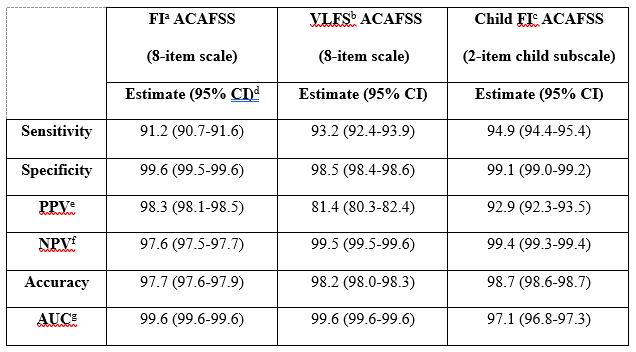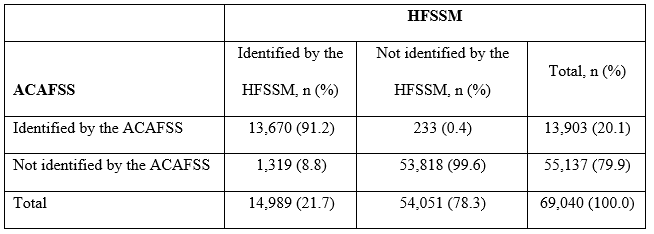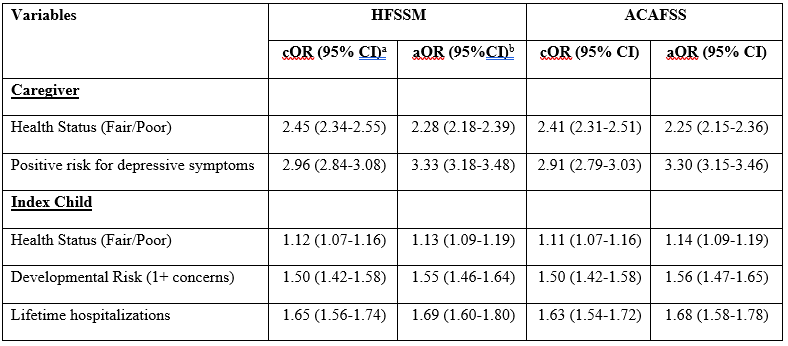Health Equity/Social Determinants of Health
Health Equity/Social Determinants of Health 3
544 - Development and Validation of an Abbreviated Child and Adult Food Security Scale (ACAFSS) for use in clinical and research settings in the United States
Publication Number: 544.118

Ana Poblacion, PhD, MSc (she/her/hers)
Research Scientist and Director of Multisite Operations
Research and Policy Organization
Boston, Massachusetts, United States
Presenting Author(s)
Background:
Food Insecurity (FI) is a public health issue in the United States. FI prevalence was consistently above 10% over the past 20 years, indicating chronic economic hardship. Recession periods exacerbate already high prevalence of FI, reflecting acute economic hardship. To monitor FI and respond quickly to changes in prevalence, an abbreviated food-security scale measuring presence and severity of food insecurity in both adults and children is needed.
Objective: Develop an abbreviated, sensitive, specific, and valid food-security scale to identify severity levels of food insecurity in households with children.
Design/Methods: We analyzed cross-sectional and longitudinal survey data (1998 to 2022) from racially diverse primary caregivers of 69,040 index children under age four accessing health care in five US cities. Sensitivity, specificity, positive and negative predictive values, accuracy, and the area under the Receiver Operator Curve (AUC) were used to test combinations of questions for the most effective abbreviated scale to assess levels of severity of adult and child food insecurity compared to the Household Food Security Survey Module (HFSSM). Adjusted logistic regression models assessed convergent validity between the Abbreviated Child and Adult Food Security Scale (ACAFSS) and health measures. McNemar’s tests examined the ACAFSS’ performance in times of acute economic hardship.
Results: The ACAFSS exhibited 91.2% sensitivity, 99.6% specificity, 98.3% and 97.6% positive and negative predictive values respectively, 97.7% accuracy, and a 99.6% AUC (Tables 1 and 2), while showing high convergent validity (Table 3).
Conclusion(s): The ACAFSS is highly sensitive, specific, and valid for detecting severity levels of FI among racially-diverse households with young children. The ACAFSS is recommended as a stand-alone scale or a follow-up scale after households with children screen positive for food-insecurity risk using the Hunger Vital Sign™, for example. The ACAFSS is also recommended for planning interventions and evaluating their effects not only on the binary categories of food security/insecurity, but also on changes in levels of severity (high/marginal/low/very low food security), especially when rapid decision-making is crucial.


